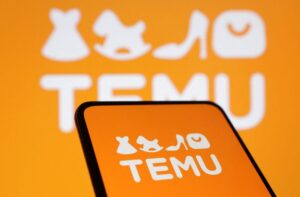Week in Review
- Asian equities were mixed for the week as China markets outperformed significantly with the Hang Seng up +6.89%, the Hang Seng Tech Index up +11.73%, Shanghai up +2.74%, Shenzhen up +4.84%, and the STAR Board up +5.44%.
- Tesla
Tesla
- China released April purchasing managers’ indexes (PMIs) on Tuesday. The Manufacturing PMI beat estimates while non-Manufacturing was slightly below expectations.
- Yum China, which operates numerous American fast-food brands in China including KFC and Taco Bell, reported its highest ever revenue overall, though the report was still slightly short of high analyst expectations.
Key News
Asian equities were mixed overnight following Apple’s
Apple
Asian currencies were strong overnight versus the US dollar as China’s offshore Renminbi (CNY) traded at 7.19 CNY per USD this morning versus Tuesday’s 7.25 (a lower price is renminbi appreciation versus the US dollar).
Hong Kong-listed stocks had a good day following yesterday’s very strong day in US-listed China stocks, which is discussed below. One catalyst was domestic and international travel data showing very strong year-over-year (YoY) increases, which indicate that the rumors of the death of the Chinese consumer may have been greatly exaggerated. Mainland media noted “hotel orders in county areas increased +64% year-on-year, and ticket orders increased by more than 200% year-on-year.” Meanwhile, Ctrip Research Institute noted that “inbound and outbound travel orders increased by more than +70% year-on-year”. As a result, travel plays were higher, including Macau casino stocks such as Galaxy, which gained +3.59% and Sands China, which gained +4.92%, and travel booking sites Trip.com, which gained +3.44% and Tongcheng Travel, which gained +2.18%.
Consumer names were mixed. Yum China gained +4.62% though hot pot chain Haidilao fell -0.21%.
Hong Kong’s most heavily traded stocks by value were Tencent, which gained +1.11%, Alibaba, which gained +4.07%, Meituan, which gained +0.5%, AIA, which gained +3.37%, Ping An Insurance, which gained +4.08%, JD.com, which gained +5.48%, and Kuaishou, which gained +5.07%.
Online real estate company KE Holding (BEKE in the US) gained +6.84% along with Hong Kong-listed real estate stocks overall. The real estate sector was strong again on reports that Shanghai real estate firms are offering “trade-in” deals for those looking to sell a home and buy a new one along with clear policy support earlier this week from the Politburo.
Electric vehicle and auto stocks were largely higher as BYD gained +0.62%, Li Auto gained +3.16%, XPeng gained +4.83%, Great Wall Motor fell -0.17%, and NIO fell -0.58%.
Sunday will be interesting. We will see how the Mainland market opens coming back from its holiday, which occurred just as Hong Kong saw strong gains. Meanwhile, the April Services PMI and new loans, which are due to be reported next week.
US-listed China stocks had a very strong day yesterday, leading to the invariable question: is this rally for real? And, was short covering a factor yesterday? 100%! We have seen this before. Back on April 2nd, the Hong Kong listed Brilliance Auto rallied +25.93% after an unexpected dividend announcement sent shorts scrambling to buy the stock and cover their losses, sending the stock soaring. Bank of America’s
Bank of America
We have long articulated that the China underweight and/or neutral status of most investors started with US investors due to Trump’s Trade War, China’s Zero COVID policy, and internet regulation. It was then followed by European investors, due to their overweight to Russia immediately before the invasion of Ukraine. It then spread to Asian investors and, finally, to local Chinese investors. The unwind will likely occur in the opposite order. Chinese investors are, without question, already buying Chinese stocks. The “National Team”, i.e. investors associated with sovereign wealth, is buying mega-cap Shanghai and Shenzhen-listed stocks and Mainland investors are buying Hong Kong-listed stocks via Southbound Stock Connect. Asian investors could take a piece of US tech, Japan, and/or India overweight profits and roll into China and China technology. Did anyone notice that China technology is beating Japanese and Indian stocks by +20% too now, since February?
By types of investor, the momentum and trend of following the crowd will cause hedge funds and individual investors to move more quickly than most, as big institutions need to have investment committee meetings, etc. Do you think anybody had a conversation on taking off their EM Ex China position yesterday? Me neither. It will take time for the “big money” institutions to get involved. Active portfolio managers who are very underweight China cannot fall behind their benchmark. These managers are likely feeling some pressure as tracking error can quickly become negative alpha, i.e. you’re fired. I would assume that long-only managers have started to pivot already. All I am saying is that the rally could grind higher due to the vast under-allocation to the space, as just the simple move from underweight to neutral would be a big one.
The Hang Seng and Hang Seng Tech indexes gained +1.48% and +2.74%, respectively, on volume that increased +21.7% from yesterday, which is 118% of the 1-year average. 301 stocks advanced while 172 stocks declined. Main Board short sale turnover increased +21.73% from yesterday, which is 109% of the 1-year average, as 16% of turnover was short turnover (remember Hong Kong short turnover includes ETF short volume, which is driven by market makers’ ETF hedging). All factors were positive, as value and large caps outpaced growth and small caps. The top-performing sectors were Consumer Discretionary, which gained +2.83%, Real Estate, which gained +2.00%, and Communication Services, which gained +1.91%. Meanwhile, Health Care and Materials were off -0.99% and -0.30%, respectively. The top-performing subsectors were insurance, retail, and consumer services. Meanwhile, pharmaceuticals, healthcare equipment, and telecom were among the worst-performing. Southbound Stock Connect was closed overnight.
Shanghai, Shenzhen, and the STAR Board were closed overnight.
New Content
Read our latest article:
China Market Connect March 2024: Marching in Asia
Please click here to read
Last Night’s Performance
Last Night’s Exchange Rates, Prices, & Yields
Mainland China’s currency, commodity, and bond markets were closed overnight.
Read the full article here
















